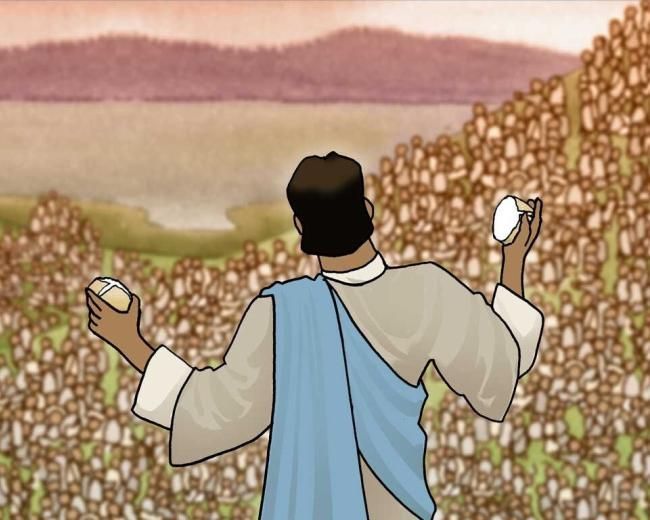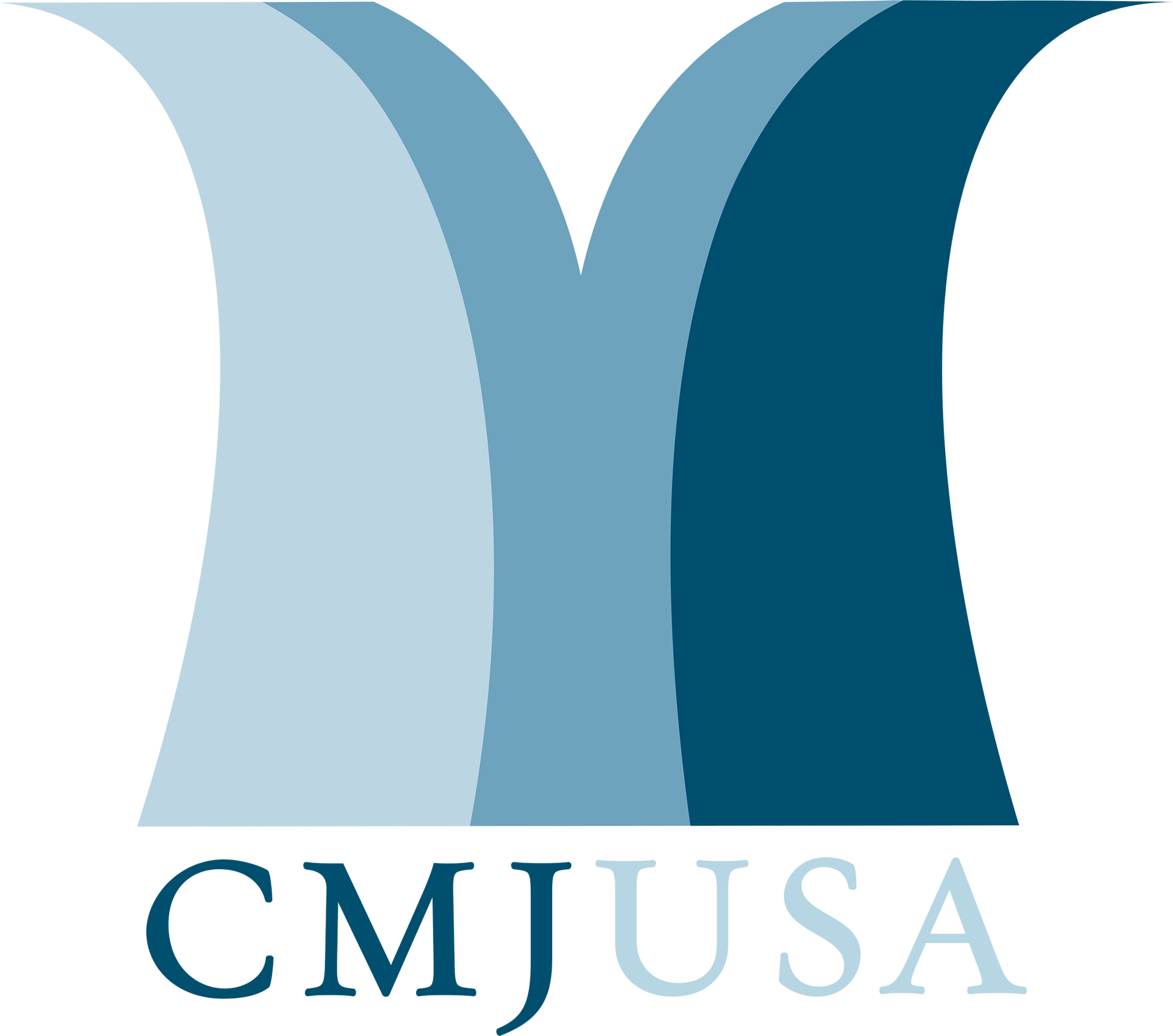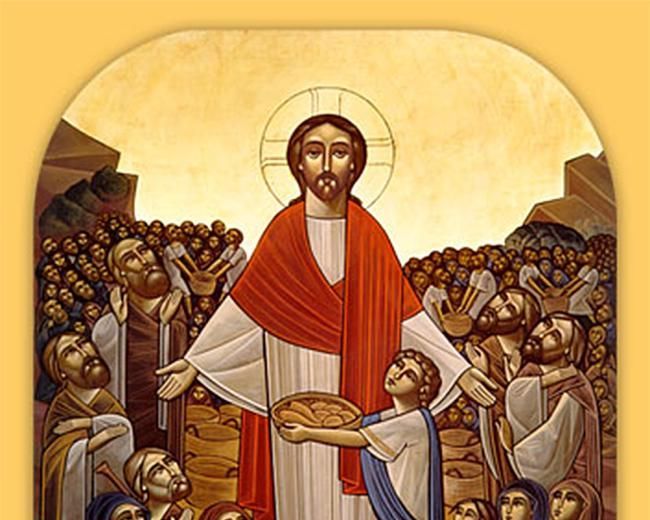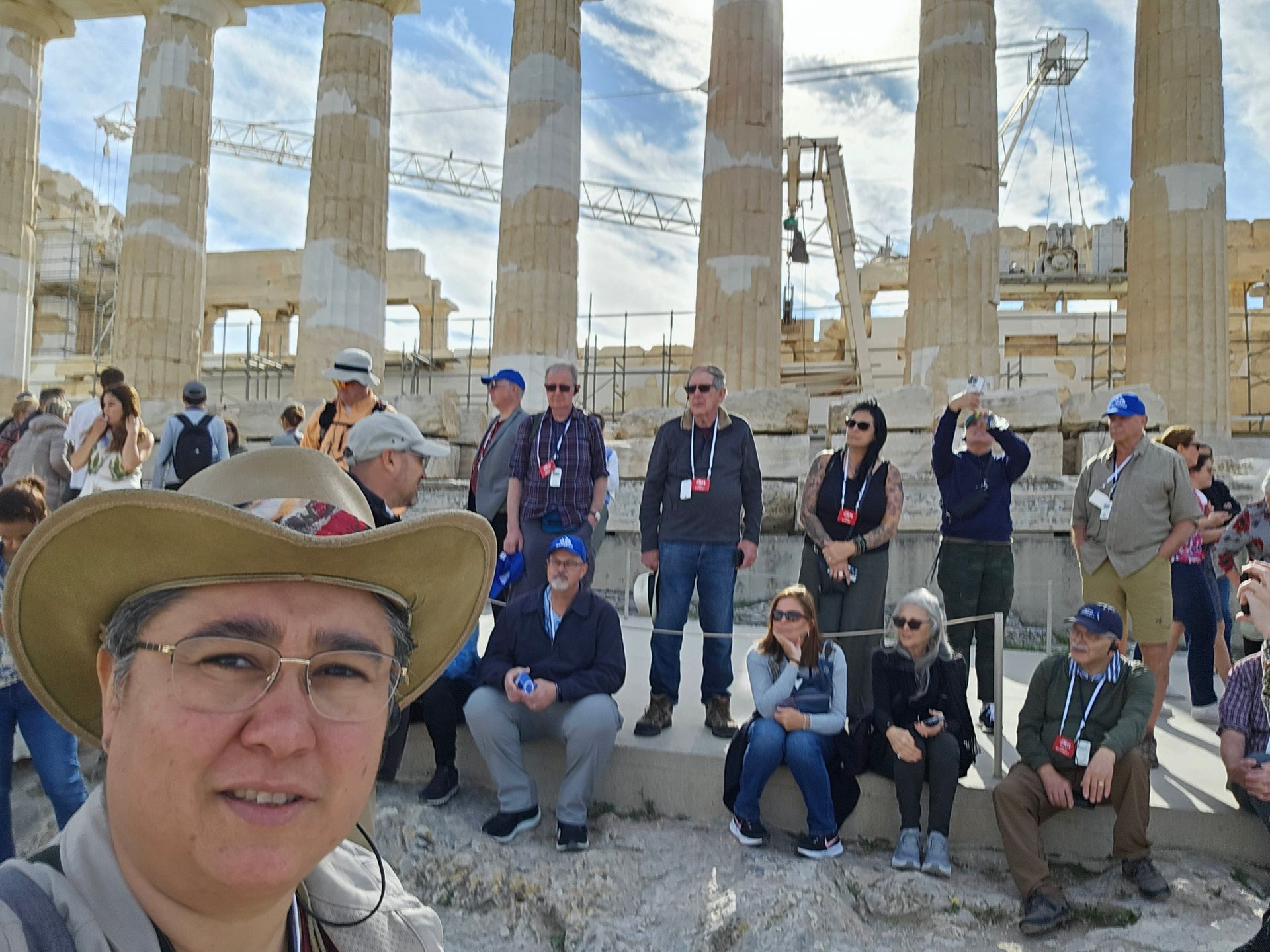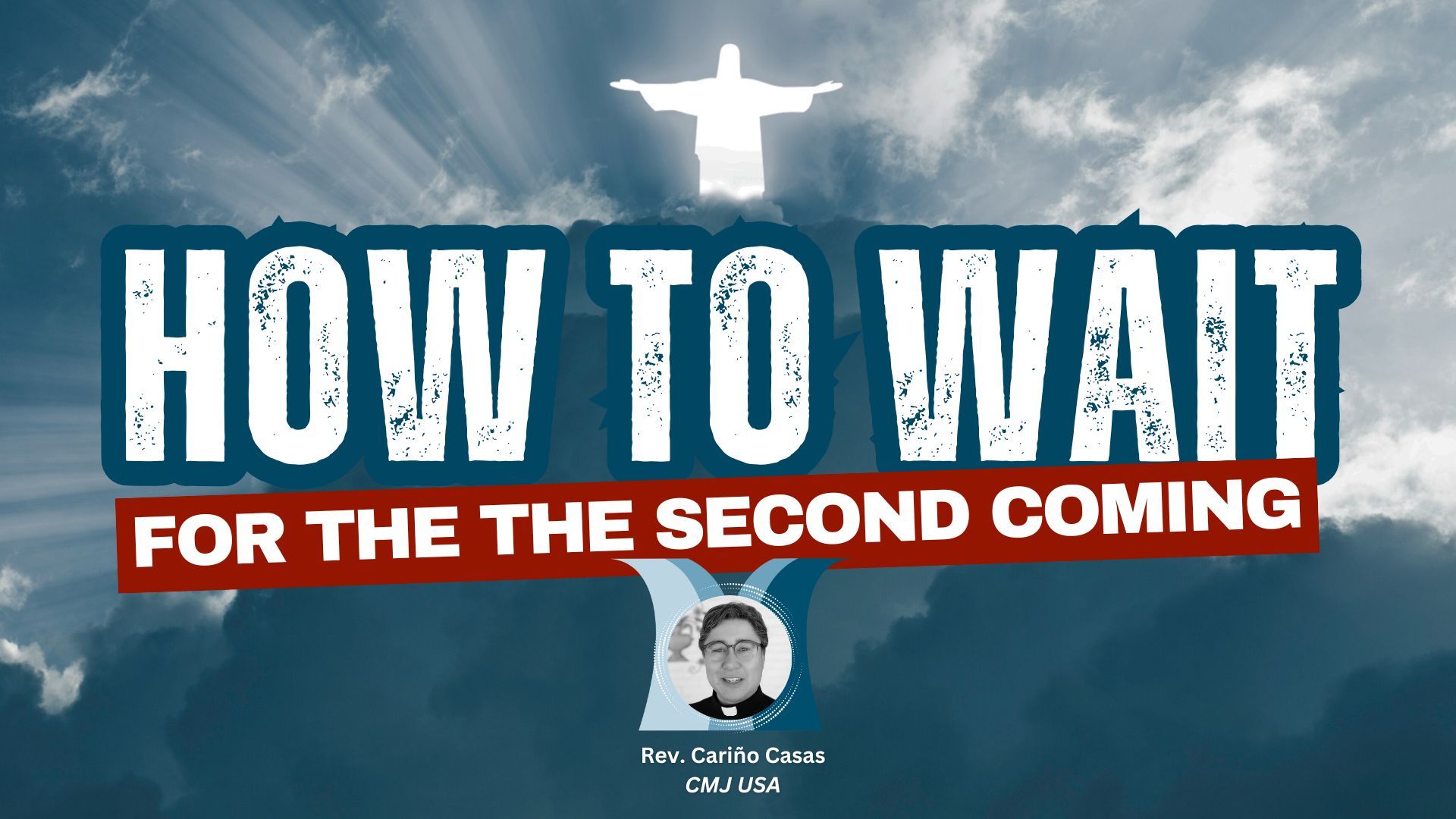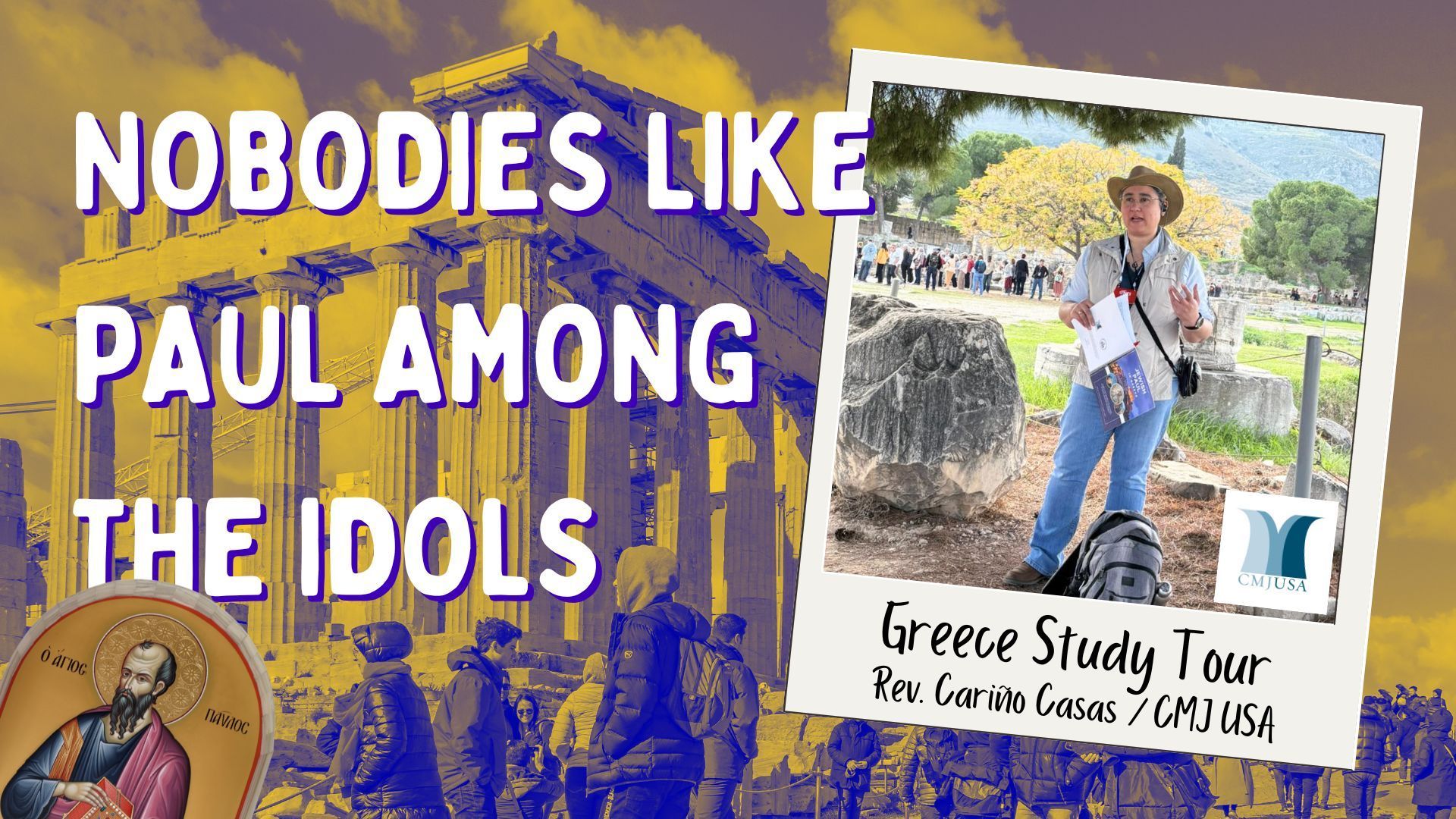The Galilean multitude was not as mutinous as their ancestors, but they were also hungry, and the disciples came to Jesus and said, “This place is secluded and the hour is already past to eat; send the crowds away, so that they may go into the villages and buy food for themselves.” Jesus’ response is curious: “They do not need to go; you give them something to eat.” It is true that Jesus had already taught them to pray, “Give us this day our daily bread,”
5
but
h
e hadn’t asked them to pray for other people’s food.
Image by Yo Ministry via FreeBibleImages.org
The Galilean multitude was not as mutinous as their ancestors, but they were also hungry, and the disciples came to Jesus and said, “This place is secluded and the hour is already past to eat; send the crowds away, so that they may go into the villages and buy food for themselves.” Jesus’ response is curious: “They do not need to go; you give them something to eat.” It is true that Jesus had already taught them to pray, “Give us this day our daily bread,” 5 but h e hadn’t asked them to pray for other people’s food.
Image by Yo Ministry via FreeBibleImages.org
